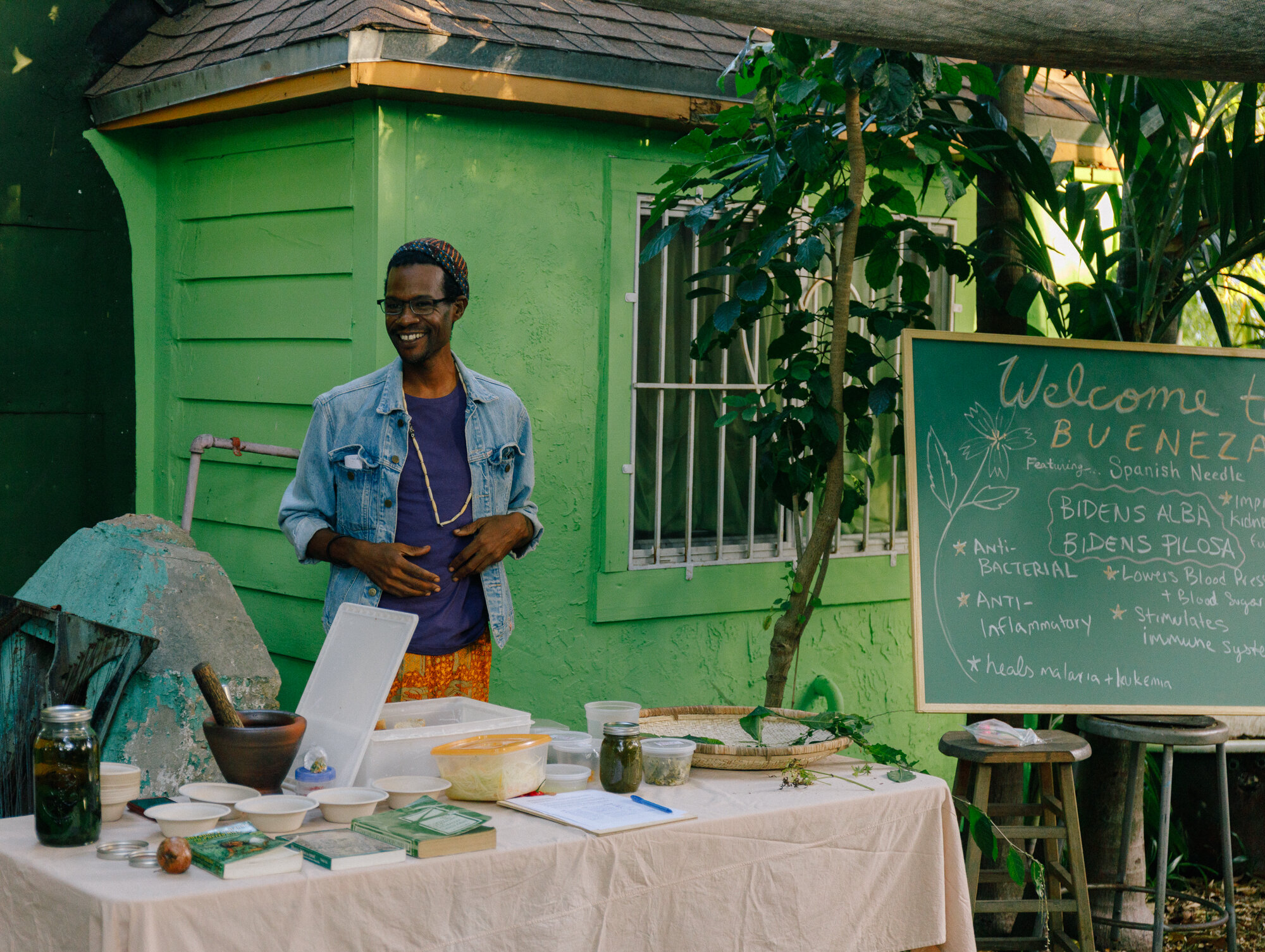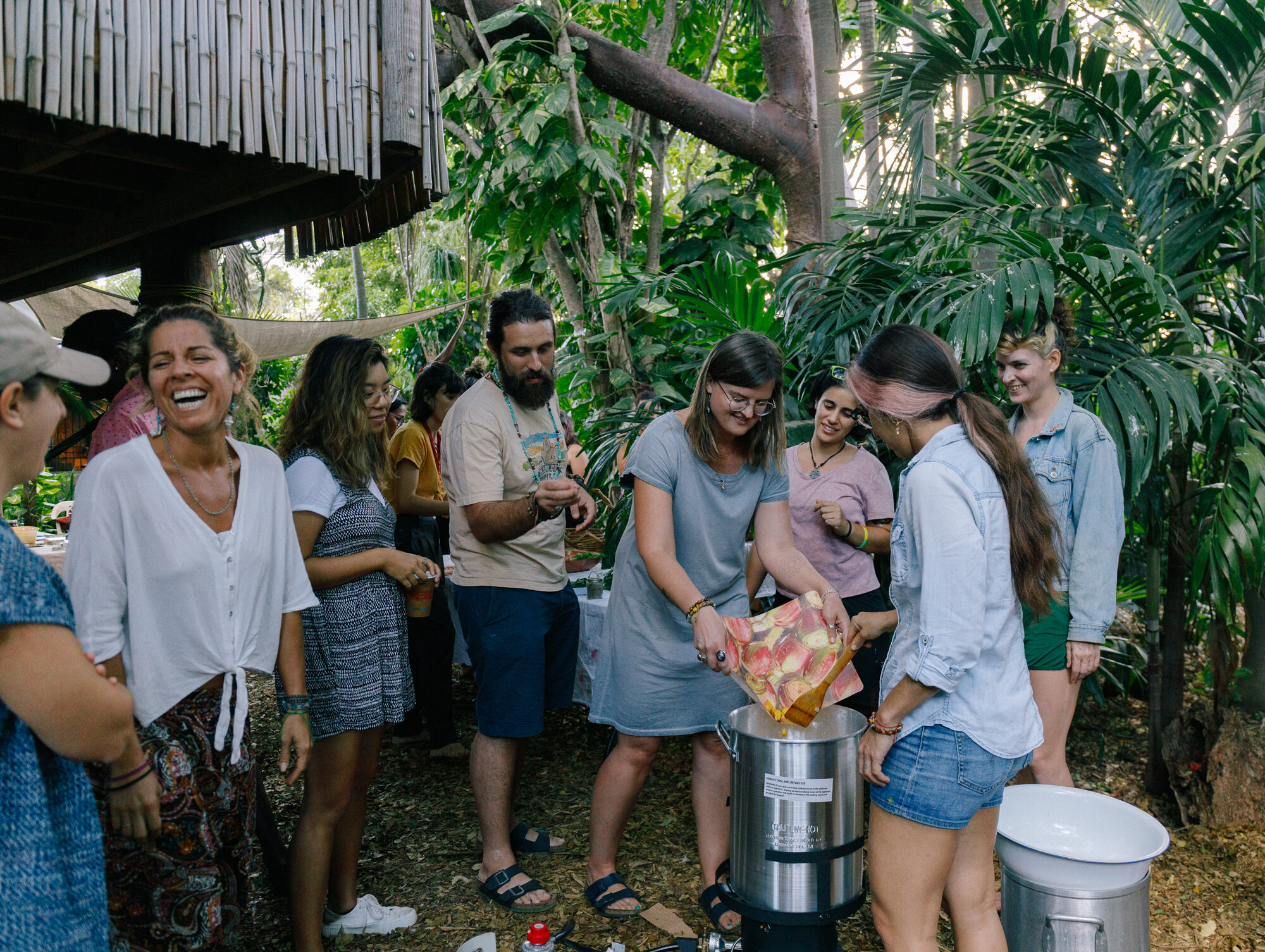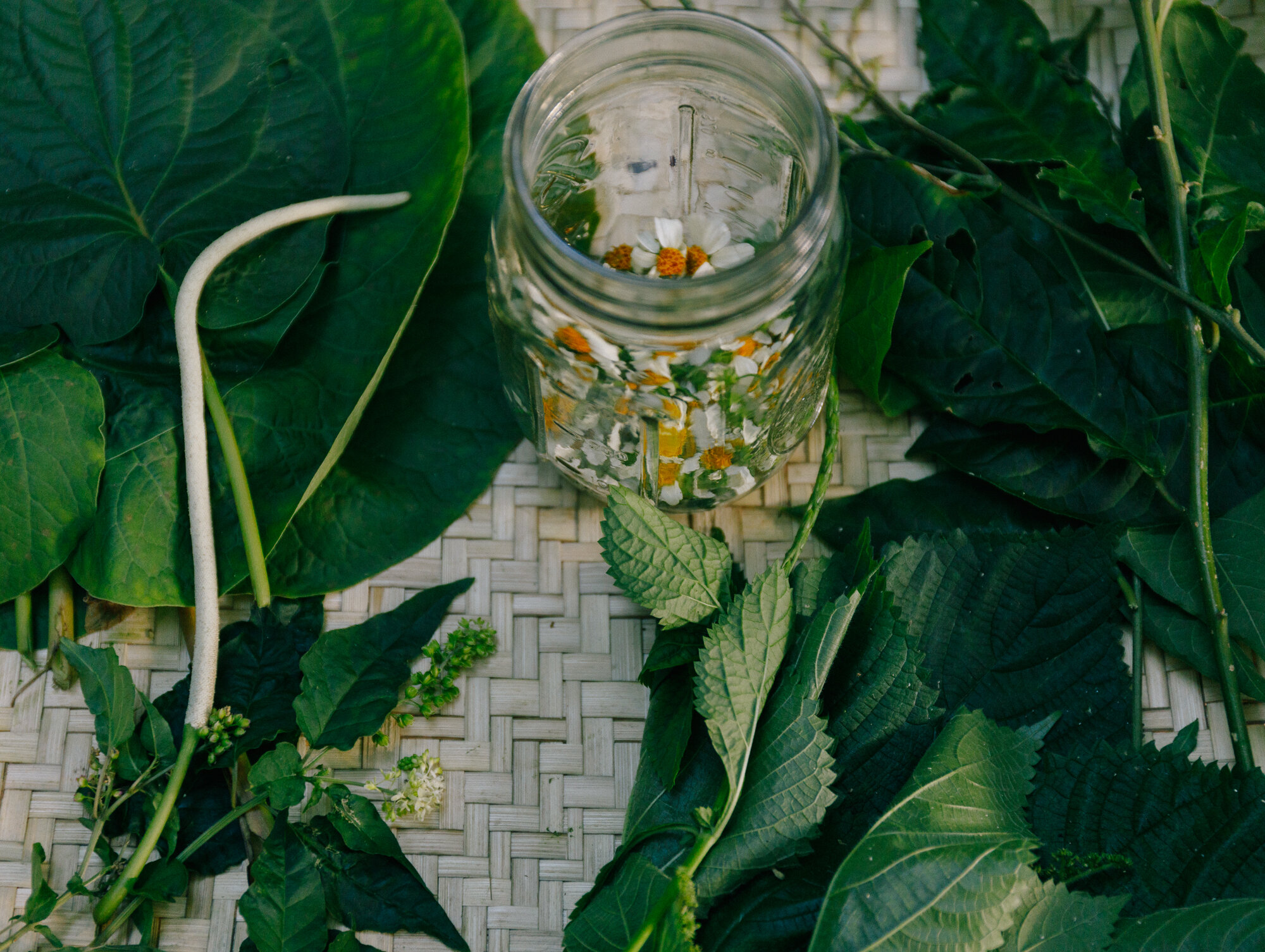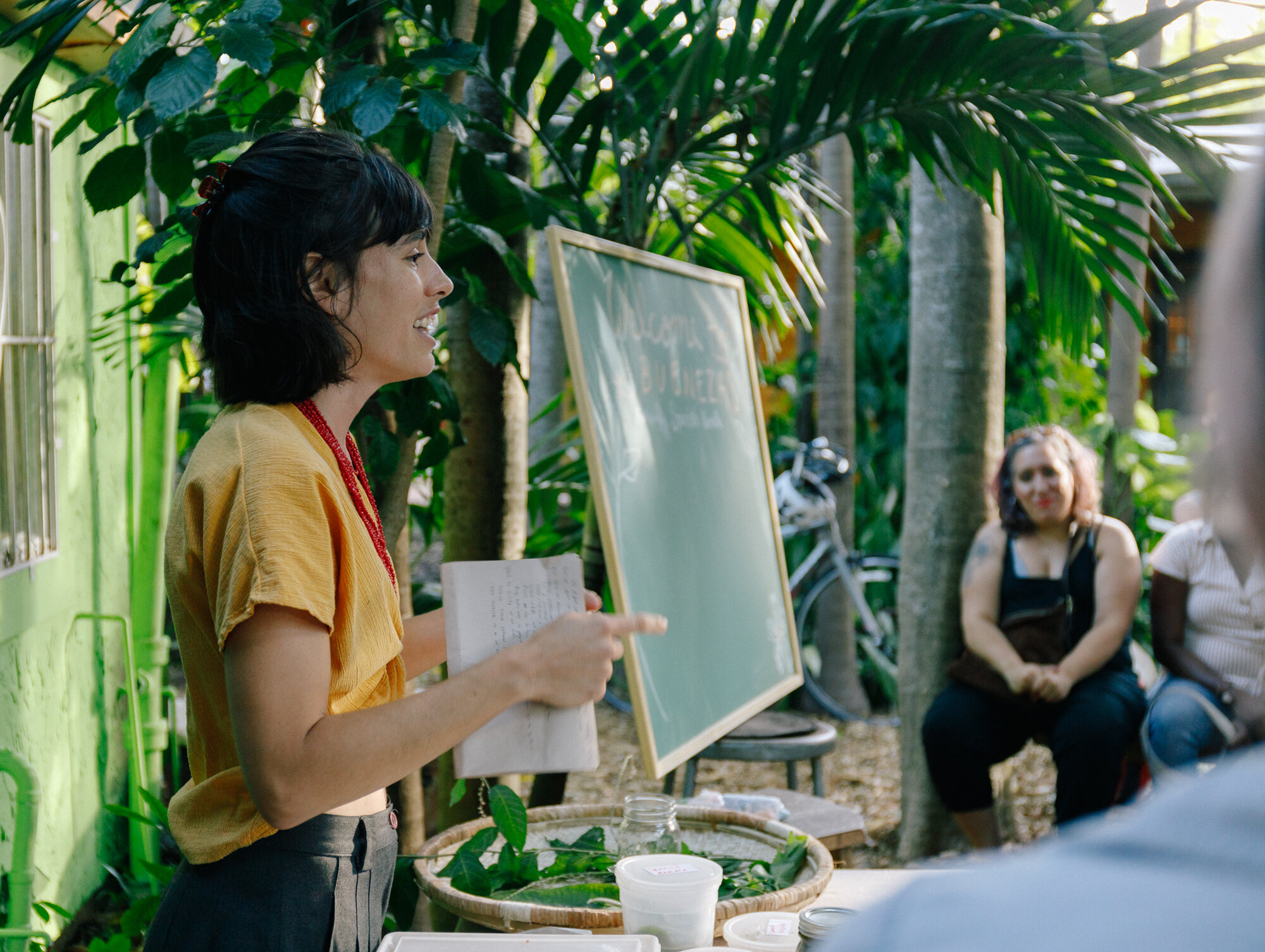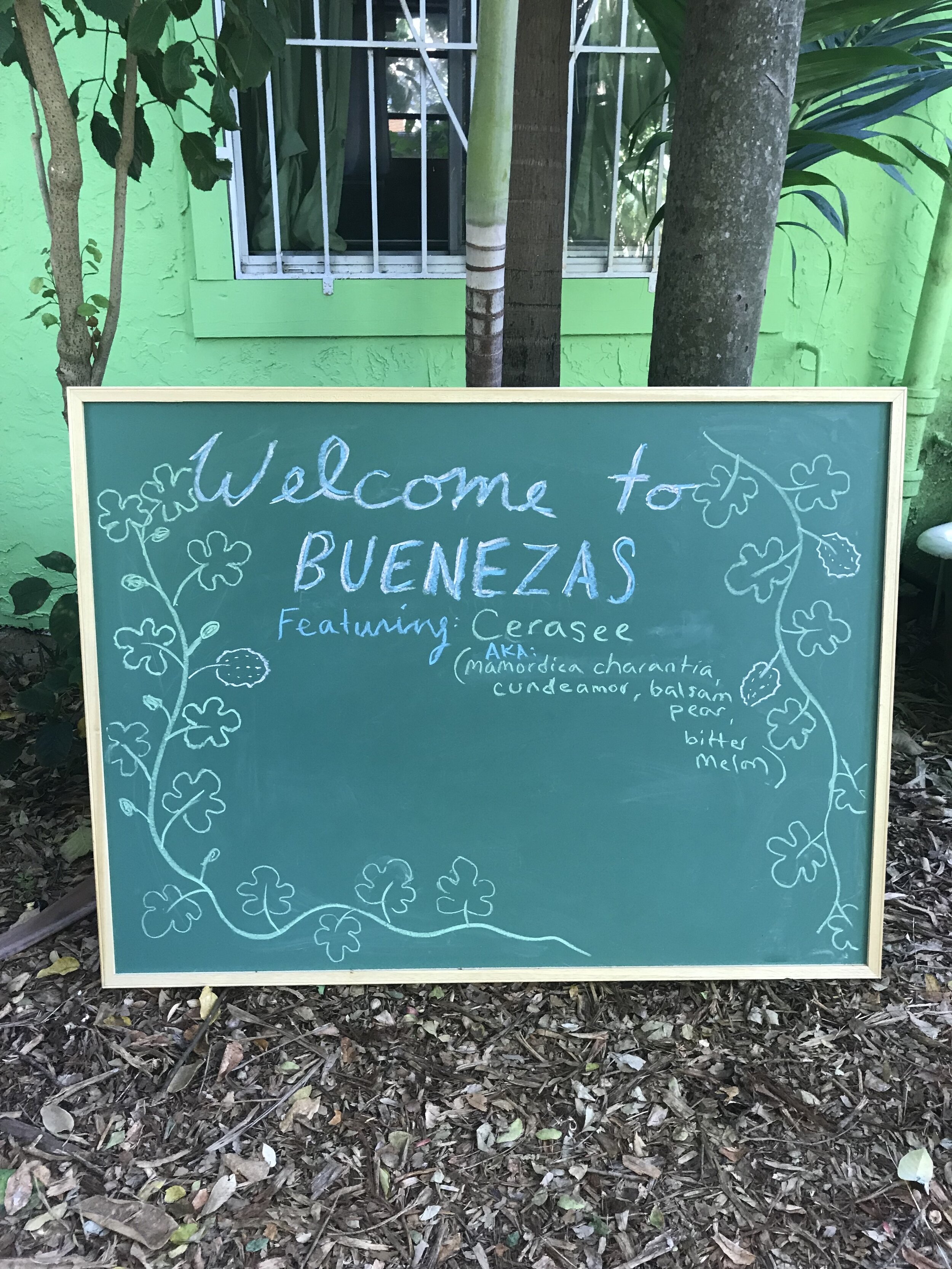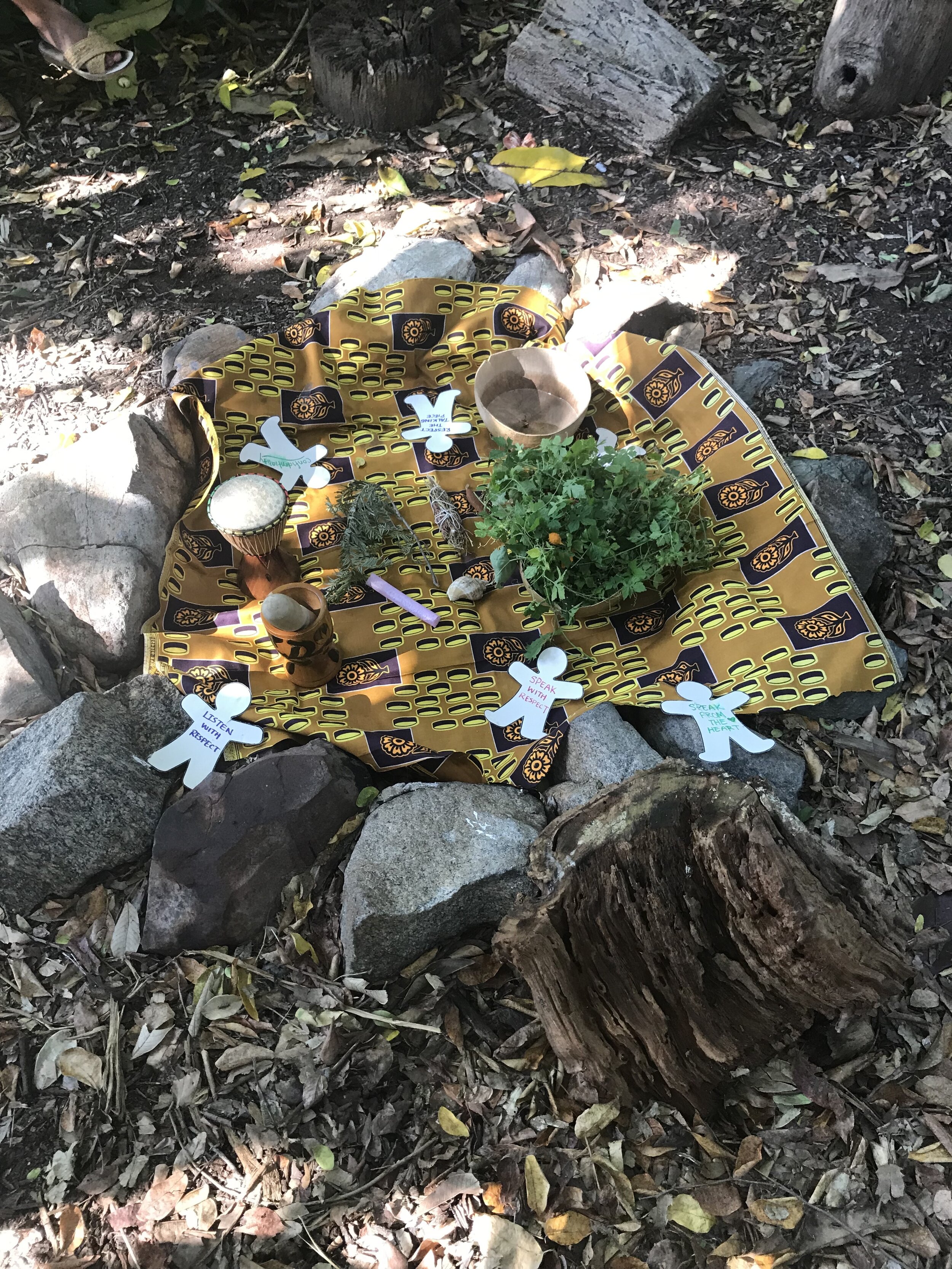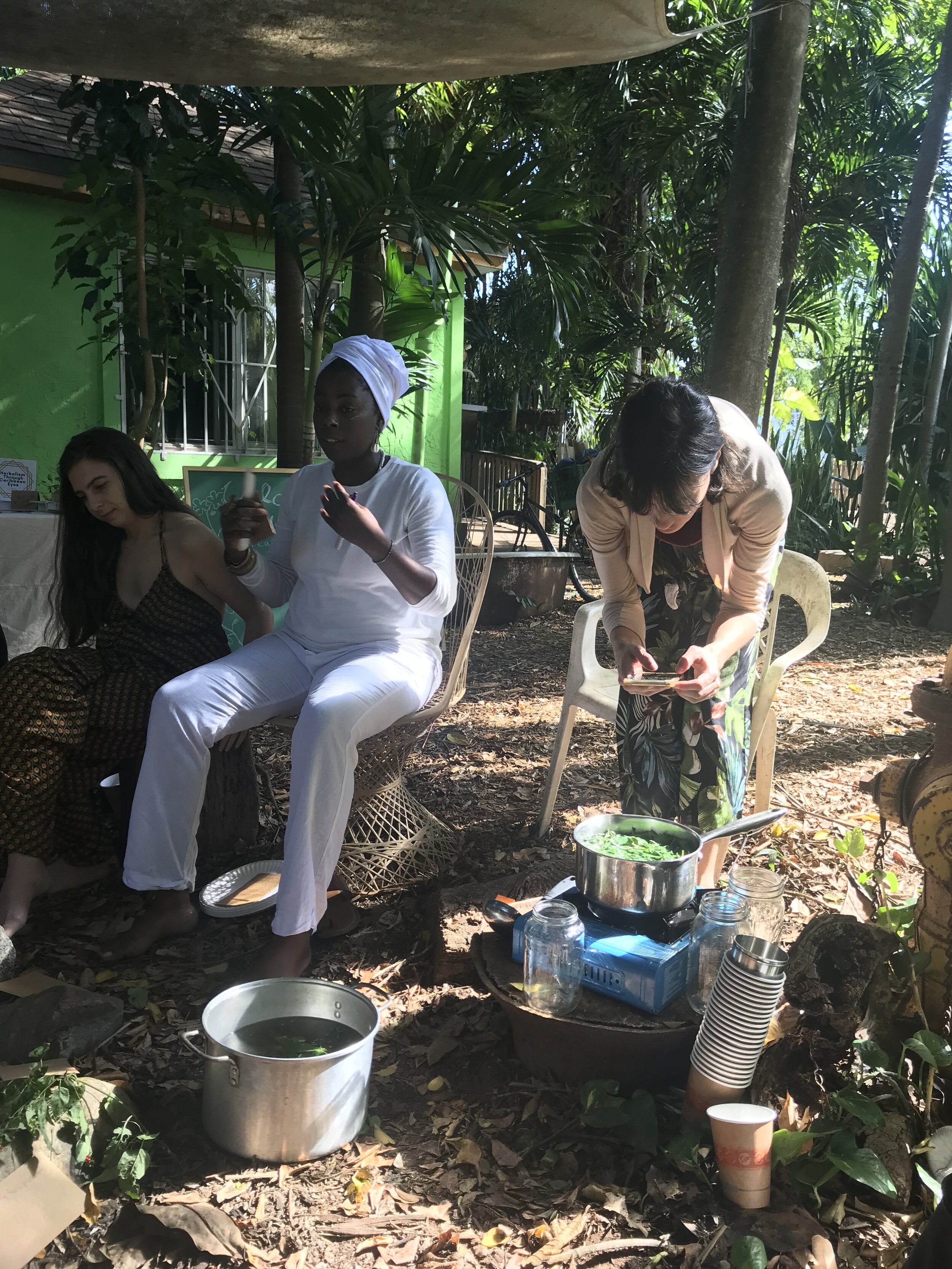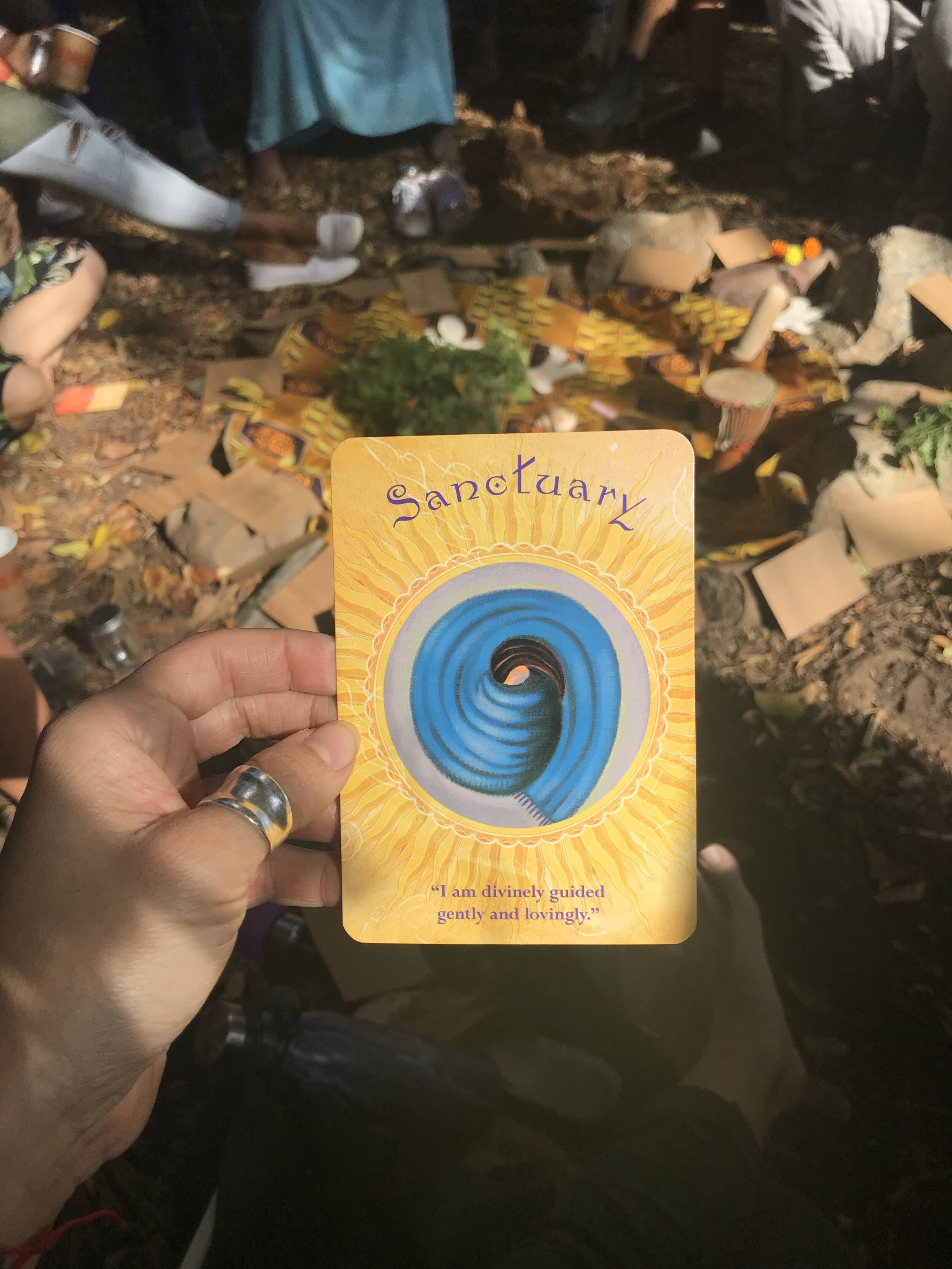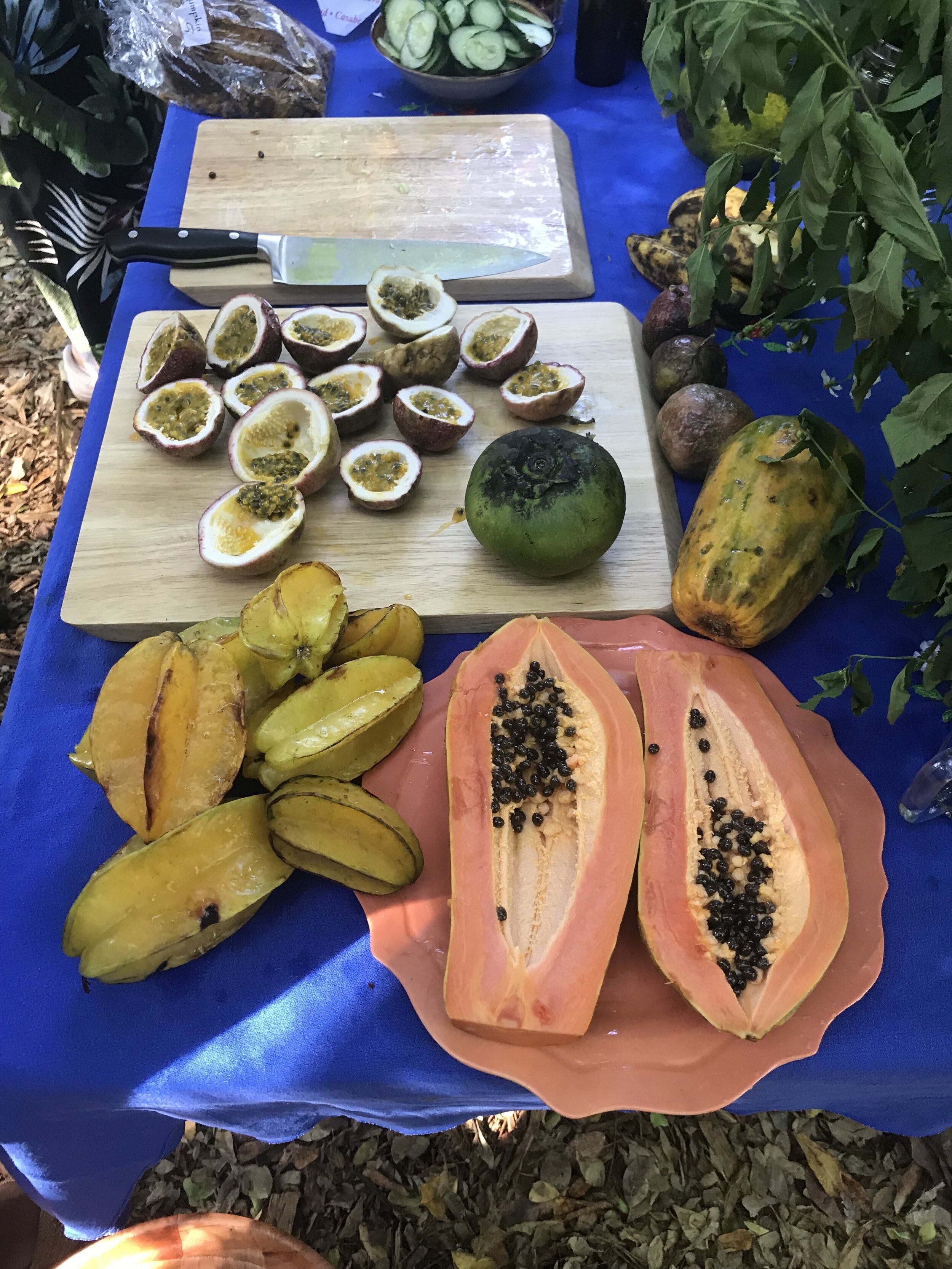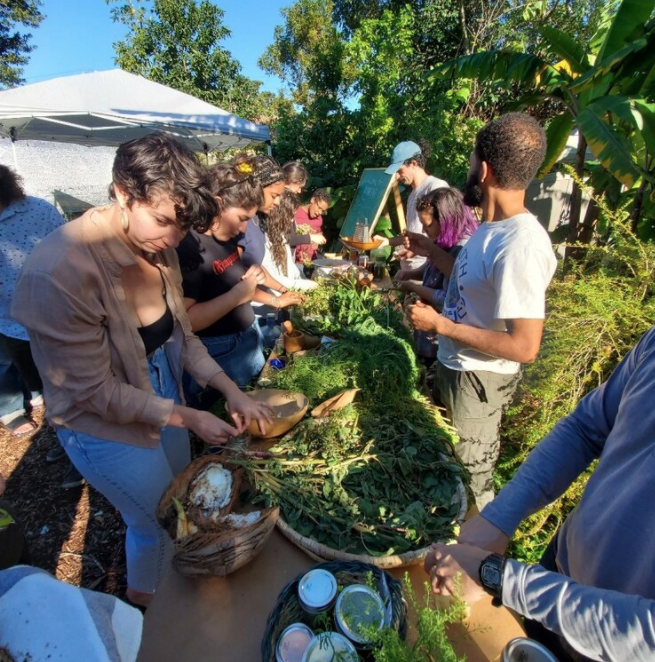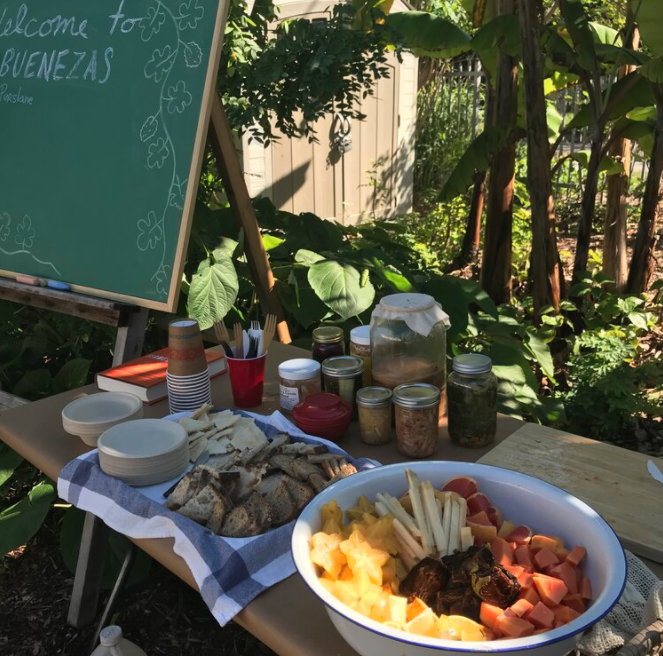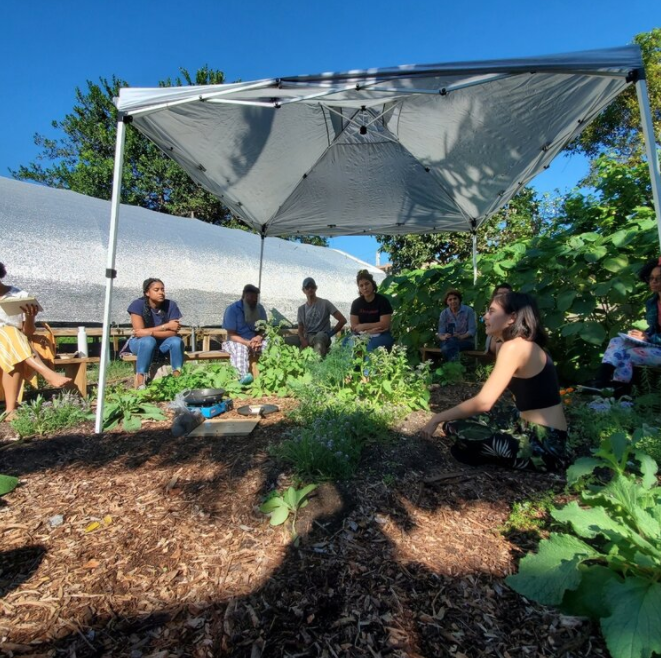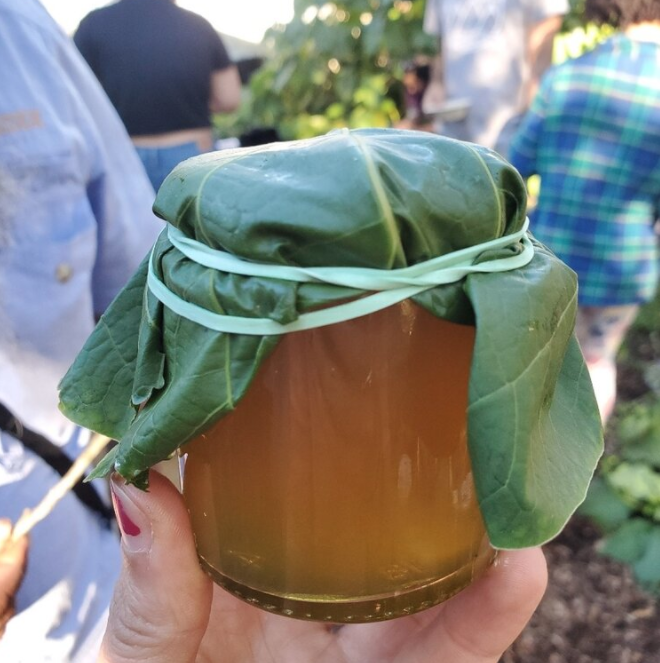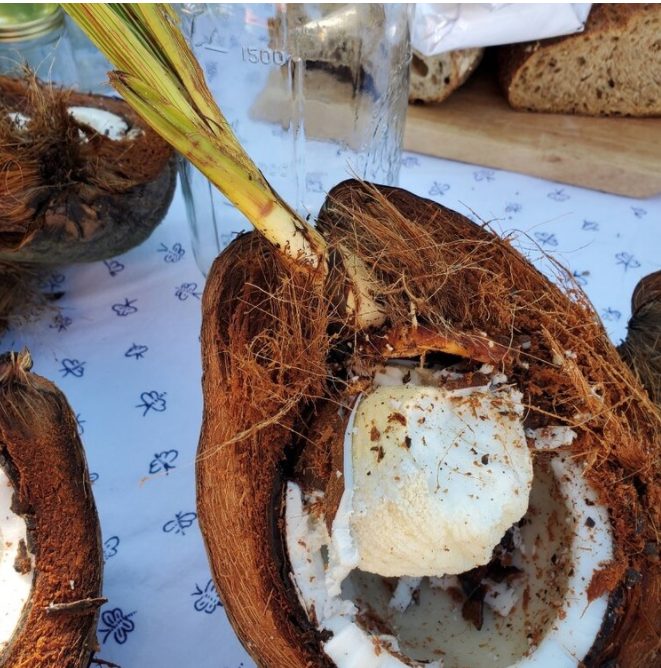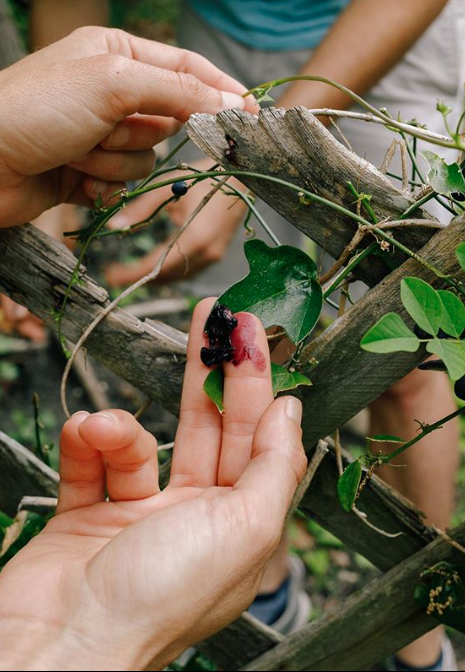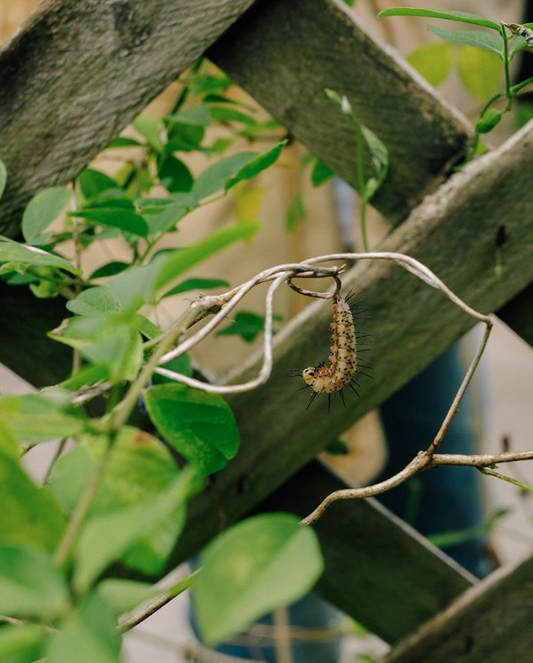Wavemaker Grantee: Buenezas
Co-written by Gabriela Serra, Monica Uszerowicz, and Nicole Salcedo.
Interview with the Artists
Tell us about your WaveMaker project:
“Buenezas - Edible Plant Guide of Little Haiti” is a project that consists of a series of workshops, panels and activities addressing the topic of naturally growing local weeds and their ancestrally known, but unfortunately forgotten benefits.
There is a growing movement of folks around the world transforming the Spanish word for “weed,” maleza, into bueneza—good, not bad.
In September 2019, after the heavy rains, we started seeds and seedlings that we later planted with the help of Semillas COOP, a farm cooperative, and other people who showed interest in learning. We led plant walks around Little Haiti and Earth ‘n’ Us, a local farm and oasis, identifying and photographing buenezas that are edible or have medicinal properties. We worked with James Duncan-Portuondo, a Miami botanist and friend who is currently writing a book on weeds. James helped us greatly to identify plants, and is always supportive of us learning about the nature that grows through concrete cracks.
We learned that the more we observe, the more abundance we find. We decided to showcase one bueneza per workshop and bring extra plants to show or try them. The more classes we did, the more we realized that, sometimes, we just need silence and space to sit with the plants and to allow people to share what they know. We sense an urge in our community to express themselves and heal from traumas created by our current capitalist system.
We did our first class of the season at Earth ‘N’ Us with Drigo, a culinary artist living in Miami. As an introduction, this class was exhilarating. It was kind and loving; the long length of the class made everyone feel comfortable and at home. Monica’s mom, Helen Citrin, wrote an opening prayer:
We’ve come together to give thanks and blessings:
to you,
our neighborhood, our community, the ancestors who brought us here today--
and to Mother Earth
for the soil,
the plants,
the trees,
the air she helps us breathe,
and the time she’s given us together.
May we be together in mind, heart and spirit.
May we hear the plant kingdom, and all it has to teach us.
May we learn from Mother Earth, and from one another.
We promoted this first class using flyers and knocking door-to-door around the neighborhood, and we were happily surprised that neighbors showed up. Drigo led a demo cooking class showcasing three nutritional dishes using Spanish Needle (a local bueneza) and other tropical fruits and vegetables. It was an honor to taste his creativity and all the knowledge passed on by his family and mentors; we then cooked about four gallons of sancocho together (more people showed up for the food than for the class).
During our collective dinner, we had the opportunity to see the Cameroon artist and musician Belmond Black perform. Monica told us it was his birthday, so Allem, Drigo’s daughter, baked him a beautiful cake and we all sang “happy birthday.”
We noticed that many of the neighborhood residents were surprised to learn about Spanish Needle’s uses. A plant that is so present in our city goes unnoticed by many; only bees and insects know how powerful this plant is. Allowing the participants to share their knowledge and lack thereof was super helpful. The class felt like an open-source collaborative project.
For the second class, which showcased cerasee, Ruth Jeannoel of Fanm Saj hosted a restorative justice circle. This day brought to light something very special: buenezas were described in reference and comparison to human beings, instead of being introduced in a more traditional, instructional context. Rather than a didactic workshop on cerasee’s properties, the herb was incorporated into a larger discussion: enjoyed as a tea during conversation, introduced as a member of the circle. Herbs and plants can be “taught” like this, too: by interacting with them, allowing them to become part of the class. In this way, cerasee—for example—was as much a participant in the circle as we were. Being with the herb or plant is a way to decolonize them, to bring them closer to us.
The experience was very amazing; together with Ruth’s guidance, we created a space to be vulnerable. We all cried from happiness and pain, from realizing we are all human and we want the same things—even in a class of so many age groups and backgrounds. We are so grateful to Ruth and everybody who shared intimate moments with us. All 25 participants took home a tincture made with cerasee; Gabi led a demo on how to prepare them. We drank sida infusion, which our neighbor Gloria brewed for us, and Jamaican dog blood bush tea, to relieve the menstrual cramps some of us were feeling that day.
Class 2, Cerasee, with Ruth Jeannoel. Photos by Nicole Salcedo:
For our third event, we invited Sam and Diana from Magic City Gardens to show us how to ferment purslane and to talk about their urban farming project. We were able to share local handmade products, like Mr. Picklyz, which you can find at the Little Haiti Cultural Center, and tempeh from BeCultured, a project run by a neighbor from the garden. Our friend Juan brought fermented coconuts, which many of us, myself included, had never had. Ana, Diana’s mother, brought fermented dishes to share. All participants were able to pickle purslane sourced from our farm lot. (When we cook big amounts of food, we prefer to use buenezas from farms to avoid harvesting from the street.) We talked about how purslane could be a valuable crop in South Florida as the water rises; purslane is able to grow on very salty soils with poor conditions.
Before class started, Gabi went to the street and invited people walking around. We met a neighbor who, among many other things, works as a plumber. He’d worked on the construction of Little Haiti’s plumbing and spoke to us about the neighborhood in the 1970s, revealing his Alma Mater was Earth ‘N’ Us. We were happy he joined the class. Community is built through the years; therefore we question the idea of land “ownership.” Life is not a competition based on who gets there faster. If anything, fermenting food can teach us that waiting is worth it, that time gives you substance and wisdom. The vast majority of us depend on a very fragile mono-crop agricultural system, which is unsustainable and creates anxiety for all of us.
Class 3 with Sam and Diana from Magic City Gardens. Photos by Sabrina Beydun, Diana and Chantelle Sookram:
Corinne Mariposa, who led our fourth class, runs Miami Seed Share—she creates seed libraries around the city so people can re-learn the habit of seed saving and exchanging. It is vital for our survival as a species to save seeds, and she motivates people to do so. Our activity with Corinne was so special; we talked about plants that are necessary for butterflies to survive and the buenezas the butterflies use as source nectar. Not everything you plant has to be with the intention of feeding yourself only, we learned. We also plant to restore ecosystems for the many insects and animals we do not interact with. Gabi and her mom made tamales using Spanish Needle; we had more people than we expected, and everyone happily cut each tamal in half to share. All participants left with a seed or seedling of milkweed, a butterfly plant, to plant at home or at a friend’s house. Many people live in buildings and they miss the soil—they miss being able to have space to invite all this abundance.
Class 4 with Corinne Mariposa from Miami Seed Share. Photos by James Jackman:
For our fifth class, artist and educator Sebastian Duncan-Portuondo showed us how to make beautiful artworks using mosaic tiles, which gorgeously reflected the sun. We glued these shining tiles to planters, turning them into small disco balls, and everyone took home a seedling to grow in our newly-decorated pots. This taught us reverence for the seedlings themselves, as well as the mindfulness of creating together as a community; artmaking and artistry is for everyone. As everyone worked, the different age groups (those in their 20s and 30s and those in their 60s and above) began to talk about sociopolitical issues in a way that was calm and productive; Sebastian was pleased that the activity invited such conversation. We also shared a meal together; activists Gabi Rosado and Sabrina Beydoun—an incredible chef—added buenezas and flower magic to the corn polenta grits we were boiling: amaranth, hoja santa, Spanish Needle, Poor Man’s Pepper, and rosemary, parsley, limon. We were missing the lid to the pot; a soft hoja santa leaf held in the heat.
Each of these classes taught us so much about the neighborhood and about living in a time when capitalism drains our energy. We noticed that a lot of the residents living around Earth ‘n’ Us, for example, work during the weekend, or work so much during the week that the weekend is a time for staying indoors, as there are few public spaces to rest or recuperate. When building community, this is a question we ask ourselves: How does it affect people to not have free days to spend with their families? How can you heal or build relationships if one is not present for survival reasons? We did recognize that Sunday is church day, so we’ll be keeping that in mind for future classes.
What was the easiest aspect of this project? What was the most challenging? Did you learn something new? What do you wish you had done different? What went perfectly?
The easy part is that nature is the greatest teacher and healer. We felt tons of support from the people who participated, and the flow of each class was sweet and easy.
The most challenging aspect of the project: the way we live in cities—working unhealthy hours and subscribing to the idea that we must be constantly productive— creates such imbalance in nature and therefore in ourselves. Building community in a city like Miami is a concept I, Gabi, thought I knew (I have moved at least 19 times in the 18 years I’ve been here). It is so complex. For me, community means to care for and spend time with those next to you; these classes further proved to me that people need sensorial connection. Technology is great because it is instant and it unites us, but it messes with the concepts we have about ourselves or how the world truly works, which is not always fast, immediate, or tidy. Exploring medicine and fermentation processes, how soil is built, and how other cultures work, we understand the importance of open and untouched green spaces, of taking time, of people smelling, touching, observing, making mistakes. Things went the way they had to go.
Tell us what you're most excited about as a result of this project? Has it inspired a new work, collaborations, direction? Has it brought new opportunities for expanding it through other grants or exhibitions? What, where and when? Tell us more…
We are excited that so many people are pumped to learn more and to simply make the time in their lives to get together with their families, friends and strangers. It has inspired us to continue merging art with activism for the environment.
There are so many other folks in this community doing similar or like-minded work, and we want to find ways to collaborate with them, to open up platforms to share their work, too: workshops led by them, space for them to grow their own buenezas, etc. We want to continue working with others, meeting new people, slowing down together and giving love to the planet.
In one sentence - what one thing about doing this project will stay with you?
Nature is our first mother; until we humble ourselves and listen to her, no radical change can happen.
ABOUT THE ARTISTS
“Buenezas - Edible Guide of Little Haiti” is a project that consists of a series of workshops, panels and activities addressing the topic of naturally growing local weeds and their ancestrally known but unfortunately forgotten benefits. Buenezas was born in Miami, FL. Buenezas—more commonly known in Spanish as “malezas”—are weeds. These plants are not studied or fully understood in the US, where energy is spent attempting to eradicate them with chemicals. Our project originated from a desire to better understand, observe, and re-learn how to work with nature as both an ally and a great inspiration in envisioning a new way of living—making our urban communities more sustainable.
Buenezas received a Cycle 5 WaveMaker Grant in 2019. Since 2015, WaveMaker Grants have awarded $399,000 in grants to 77 Miami’s most visionary artists, collectives, and curators.
WaveMaker Grants at Locust Projects is made possible by support from the Andy Warhol Foundation for the Visual Arts and is part of the Warhol Foundation's Regional Regranting Program. Part of a national network of Warhol-initiated regranting programs, WaveMaker Grants is the first in the southeast. For more information about the Warhol Foundation's Regional Regranting Program, please click here.

